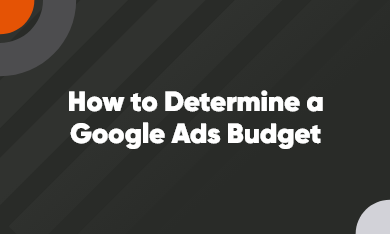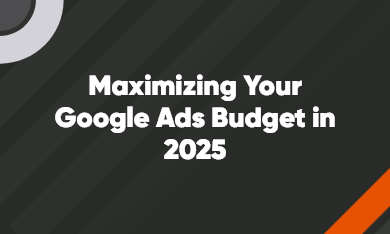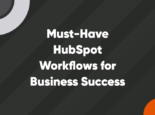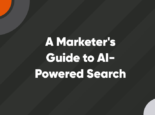
Demand Gen’s Role in a Full-Funnel Google Ads Strategy
If you’ve been paying attention to the Google Ads space over the past few months, you’re probably aware that Google is sunsetting Video Action Campaigns and replacing them with a more sophisticated video campaign type, Demand Gen. With VACs getting phased out, it’s important to consider your ads strategy and determine how your brand is building mid-funnel demand.
With better targeting capabilities, more ad placements across YouTube, Discover, and Gmail, and more control, Demand Gen offers advertisers a stronger toolkit for turning attention into action. But as with any campaign type, it only works well if you know how to use it to your advantage, and most brands are just scratching the surface of Demand Gen’s potential.
Our paid media team creates and manages strategic Demand Gen campaigns that drive real performance. Let’s unpack what Demand Gen is, how your brand can leverage these campaigns for more mid-funnel consideration, and how Demand Gen fits into your greater Google Ads strategy.
What is Demand Gen?
Demand Gen campaigns are a type of video campaign that can show up on a wide range of Google platforms, including YouTube (standard, Shorts, and Video Partners), Discover, and Gmail. This expansion of placements is crucial for marketers looking to reach their audience with strategic and impactful video content, no matter the platform they’re using. It’s a more holistic campaign type that really lets the advertiser get out in front of their audience and make an impact at the mid-funnel level when users are exploring, researching, and forming preferences.
So, what makes Demand Gen campaigns the next big thing?
Here are a few of the differentiators that set Demand Gen apart.
Expanded ad placements
With access to more placements, including YouTube, Gmail, and Discover, Demand Gen helps advertisers connect with users who are exploring new content and brands, making it perfect for brand, product, and service discovery.
Enhanced audience features
Google Ads brought more audience and targeting options to Demand Gen, which ensures advertisers are reaching their desired audience on the channels they’re using. Demand Gen campaigns pair first-party data, like customer lists and website data, with audience signals like in-market and affinity audiences to create a well-rounded and powerful targeting system. Advertisers can even build lookalike audiences to find users similar to a list that the advertiser provides.
With your first-party data in play, you can get even better, layered targeting, more effective audience builds, and better results for your business.
Multiple ad formats
To get the most out of Demand Gen’s features, advertisers should take advantage of both the image and video ads available within the same campaign. Using multiple ad types in the same campaign allows advertisers to take advantage of all of the placements available to them. This really leans into the storytelling concept, where you can share messages in a variety of formats across Google platforms, all through one ad campaign.
More campaign control
Frequency caps and bid adjustments make it much easier to tailor campaigns to your exact goals while optimizing budget. In an era where AI is everywhere, getting to have greater control over budget and targeting can be a breath of fresh air, especially as you evaluate performance and optimize spend.
Who should be running Demand Gen campaigns right now?
Should you leverage a Demand Gen campaign? Demand Gen is a helpful solution for advertisers trying to get in front of customers as they begin looking for new brands, products, or services, so it’s effective for any business that has a very clear target audience and goals. A Demand Gen campaign could be a strategic play if:
You’re focused on mid-funnel engagement
Bridging the gap between awareness and conversion can be tricky. Demand Gen is an ideal solution for getting in front of and nurturing your audience, keeping them interested in your brand and offerings across a variety of platforms.
You have strong first-party data
Demand Gen campaigns thrive on a mix of first-party data and AI signals, so if you have customer lists from your CRM, site traffic, or other forms of first-party data, you’ll be able to build a strong, effective audience.
You have engaging creative
A huge part of Demand Gen campaigns is the creative. Your creative assets should shine and tell the story of your offer through images and videos. If you already have a strong creative library with high-quality images and videos, this could be a super effective campaign type for you.
You have a long consideration cycle
Demand Gen can re-engage users as they make their way through your sales cycle, warming them up before they’re ready to make a purchase. Through first-party data combined with AI signals, you can reach your audience before they even begin to search for your business.
How to win with Demand Gen
As with any Google campaign, there are a lot of awesome features to leverage, and a lot of pitfalls that can trip you up if you’re not careful. So how exactly can you make a Demand Gen campaign work for your business? Here are our expert tips on how to execute a winning campaign.
1. Use a full funnel of creative
To take full advantage of Demand Gen campaigns, you should ensure you’re using high-quality creative that spans the entire funnel with a mix of short-form video, long-form video, and images. Seeing your ads should feel like an experience or a journey for the user, and you want them to feel immersed in the videos as much as possible. Invest in strong assets to carry your campaign further.
2. Layer audiences to balance Google’s AI with your data
Don’t neglect the power of layering audiences. Google makes it easy to combine its AI signals with your own data for an extremely powerful audience. Using your own data allows you to guide Google’s AI rather than letting the AI run the show, putting control back in the advertiser’s hands.
3. Utilize Demand Gen’s analytics features
Google introduced analytics and measurement features that provide much more transparency into campaign performance and reach. Make sure that when you’re running your campaign, you’re looking into where your ads are running and how assets are performing across each platform. From there, you’ll be able to make informed decisions about how to optimize budget and placements toward what’s working best.
4. Leverage frequency caps and bidding strategies
Another level of control that Demand Gen advertisers should take full advantage of is the ability to control frequency rates and bid strategies. Don’t let your audience get fatigued by seeing the same creative too many times. Monitor frequency rates and place a frequency cap on your ads if necessary. You should also consider experimenting with different bid strategies and bid adjustments to go after the customers you value most.
5. Continue to test and monitor results
Consistently check back in on campaign creatives, audiences, and performance metrics to ensure your campaign stays fresh and continues to perform. AI can only take your campaign so far, and continuously updating your campaign with fresh, relevant creative and copy will help it continue to shine and perform at its best.
Demand Gen and the rest of your Google Ads mix
How, you might be wondering, does Demand Gen fit in and support other Google Ads campaigns?
Demand Gen is a mid-funnel bridge that helps you continuously nurture and engage users who aren’t ready to convert but are aware of your brand, products, or services. By serving up ads to users who aren’t quite ready to buy but are starting to research and get familiar with brands and solutions, you can get ahead of them and stay top-of-mind.
It’s also a great partner for a PMax campaign if you’re running one. Because PMax is mostly working bottom-of-the-funnel engagements, Demand Gen gives you the opportunity to connect and storytell before your PMax or Search drives the conversion. Awareness-based Google Display campaigns can support the top of the funnel. Together, these campaigns allow you to take a full-funnel, holistic approach rather than looking at just one section of the funnel.
Messaging and creative used in Demand Gen campaigns is also an ongoing test to see what’s landing well and what isn’t resonating with your audience. You can test out different messages, see what works, and pivot accordingly. Having strong, impactful creative is a huge aspect of these campaigns, so continue to experiment with your creative assets until you find what works.
Boost your Google Ads performance with a Demand Gen campaign
Deciding to test out a brand-new campaign type can be a big decision. It’s new territory, and Google’s newer campaigns aren’t always fully fleshed out–take PMax, for example. At first, PMax campaigns were a bit of a black box. Google has added many features since then to improve it, but often, new campaigns require lots of trial and error.
Google Ads has been making major improvements to Demand Gen as the sun starts to set on VACs, making it a valuable campaign for driving engagement mid-funnel and pushing your target customers closer to conversion. Are you ready to explore how a full-funnel Google Ads strategy can grow your business? Reach out to meet our paid media experts and create a custom advertising strategy built to drive revenue.

Ben Fasnacht
Author
Ben Fasnacht
Categories
Date
Explore with AI
Join Our Newsletter


Maximizing Your Google Ads Budget in 2025


